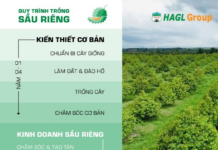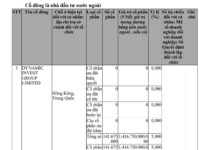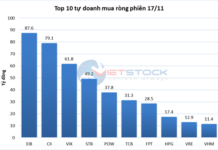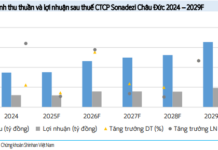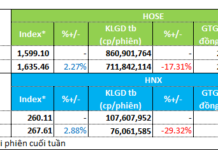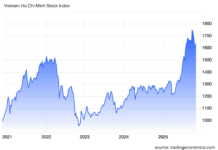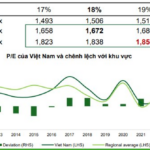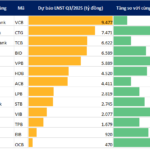
Mr. Nguyen Duc Lenh, Deputy Director of the State Bank of Vietnam (SBV) Branch in Region 2, highlighted that the figures indicate a significant growth compared to the overall credit growth in the region.
According to the data, in the first 8 months of the year, real estate credit outstanding increased by 10.9% compared to the end of last year, accounting for 27.1% of the total credit outstanding. Meanwhile, the overall credit outstanding in the Southeast region grew by 7.7% during the same period.
Ho Chi Minh City (formerly known as Saigon) remains the largest contributor, with a total real estate credit outstanding of VND 1,212 trillion, representing 82.7% of the Southeast region’s total and marking an 11.6% increase from the end of last year.
Additionally, housing loans (including commercial and social housing) reached VND 783 trillion, making up 53.4% of the total real estate credit outstanding and growing by 7.4% compared to the end of last year. Mr. Lenh emphasized that this sector is a key driver of the real estate market’s growth, aiming to meet housing demands and foster the housing market’s development. The credit growth in this area reflects the upward trend in the residential real estate market over the past period.
Real estate credit for investment in tourism, services, and construction, including office building renovations, showed varied growth rates, closely tied to the development trends of these sectors and representing a smaller share of the total real estate credit outstanding. Specifically, loans for industrial zone and export processing zone infrastructure development reached VND 79.5 trillion, accounting for 5.5% of the total and growing by 4.7% compared to the end of last year. Loans for office building construction, renovation, purchase, or lease totaled VND 23.1 trillion, making up 1.6% of the total and decreasing by 13.8% compared to the end of last year. Tourism real estate loans (including restaurants, hotels, eco-tourism areas, and resorts) amounted to VND 26.5 trillion, representing 1.8% of the total and declining by 3.9% compared to the end of last year, although loans for eco-tourism and resort construction, renovation, purchase, or lease increased by 11.5% compared to the end of last year.
Loans for residential real estate, including housing loans and land use rights transfers for housing construction, continue to dominate the total credit outstanding in this category.
Real estate loans are primarily medium to long-term (accounting for 96% of the total real estate credit outstanding), utilizing medium to long-term capital. Therefore, the growth of real estate credit is closely linked to the efficient utilization of capital by credit institutions, ensuring safety, effectiveness, and compliance with central bank regulations. This also contributes to market growth and economic development. Credit institutions should focus on maintaining these practices.
– 16:18 01/10/2025
Is Home-Buying Capital Becoming More Affordable for Young People?
The real estate credit line has shown a robust recovery since the beginning of 2025, fueled by stable mortgage interest rates that have reignited market activity. Experts highlight this trend as a key driver in cultivating a sustainable and potential customer base for the banking sector.
Economist Warns: Over-Reliance on Bank Credit Poses Significant Risks to Real Estate Sector
Real estate lending has surged, outpacing overall growth rates. Experts warn that the property market’s heavy reliance on bank credit poses significant risks, questioning its long-term sustainability.












